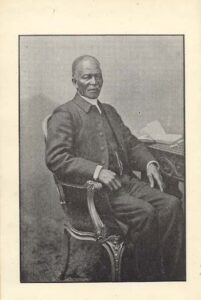
Walter Hawkins
*The birth of Walter Hawkins is celebrated on this date in 1809. He was a Black bishop in the British Methodist Episcopal (BME) Church.
From Georgetown, MD., as a child, his father worked to save enough to purchase his freedom. However, he could not afford to free his children. Young Hawkins grew up in the household handing out beatings with a stick. A slave trader bought him. That night, his father told him to run away. Hawkins made it to Baltimore and tricked his way onto a train to Philadelphia. His owners had already advertised for his arrest, and members of the Underground Railroad looked out for him. They recognized him on the train and pointed him in the right direction.
Hawkins' escape from slavery brought him to Buffalo by way of the Erie Canal. Leaving in the Canal District, Hawkins was rescued by an "old Negress" who lived down the street. The woman fed and housed him and helped him find employment as a waiter, the first time he could negotiate his wages. During his three years in Buffalo, Hawkins learned to read and write and married Mariah Francis. The couple had sons, Jackson Hamilton and Walter Jr., and one daughter, Mary Elizabeth. He also helped organize the construction of the first Black church in Buffalo, the Vine Street AME Church.
Hawkins left Buffalo around 1840. He eventually settled in Ontario, becoming a bishop in the BME church. Around this time, Hawkins met abolitionist Josiah Henson. Hawkins and Henson went to England on lecture circuits near the end of their lives. Both men grew up on the same plantation in Maryland, and Hawkins also spoke at Henson's funeral. Connected both physically and intellectually, the similar ideologies and methods of these self-emancipated slaves show the importance of both faith and knowledge as acts of African Canadian resistance. Reverand Walter Hawkins died on July 16, 1984.